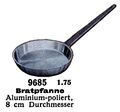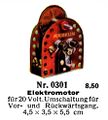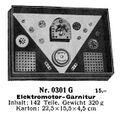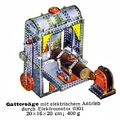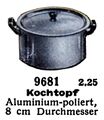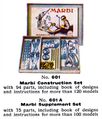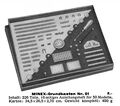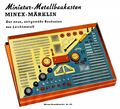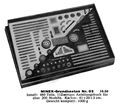Category:Aluminium
Aluminium is a lightweight silver metal, atomic element number 13 (symbol Al).
Although aluminium appears at first sight to be fairly inert (remaining shiny in the presence of water and air), it is actually extremely reactive, so much so that it immediately forms a thin and protective surface film of oxide in the presence of air that then prevents further corrosion.
Novelty
Although aluminium is a reasonably common element, its reactivity means that it is almost never found naturally occurring in pure metal form, and exists almost exclusively in a range of strongly-bound compounds from which the pure metal is extremely difficult to isolate. There are no known human artefacts made of aluminium before the first known successful small-scale extraction in 1824 (by Hans Christian Ørsted). The first industrial process to extract aluminium didn't appear until 1854, prior to which the metal was fabulously expensive.
Industrial production using electrolysis to separate aluminium from its compounds appeared in the late 1880s.
Use in toys and models
Use of the metal in toymaking has been limited, as there were few toy applications where it was important to have a low weight, and where other cheaper materials (such as balsawood) weren't cheaper. Aluminium was used in some metal construction sets as a less sturdy alternative to steel that required less finishing (it didn't need plating and/or painting to inhibit rust), and it probably appeared in some toy boats as a less rust-prone alternative to pressed steel hulls. However, aluminium in prolonged contact with seawater tends to corrode away and dissolve.
Aluminium was an obvious choice for silver-coloured bare metal dollhouse furniture pots and pans, and dollhouse cutlery.
Aluminium was also briefly used by some metal figure producers as an alternative to lead, during lead shortages related to the Korean war: however this was a short-term measure, and injection-moulded plastics quickly took over for the manufacture of small mass-produced figures.
Aluminium doesn't have the heft and reassuring feeling of solidity of diecast metal, or the convenience of plastics for moulding, and while metals are used as a selling-point in some "retro" and "traditional" toys, making a toy's parts in aliminium doesn;t confer the cachet and sense of added value that can result in using "heavy" pewter or "traditional" brass. Its wear qualities are also not as good as other metals for many model engineering-type projects, where steel or brass is superior.
External links
Subcategories
This category has the following 4 subcategories, out of 4 total.
Pages in category ‘Aluminium’
The following 5 pages are in this category, out of 5 total.
Media in category ‘Aluminium’
The following 27 files are in this category, out of 27 total.
- Aeroplane design, Alcon Model No25 (AlconBMB 1950s).jpg 2,200 × 1,437; 821 KB
- Alcon Book of Models to Build, front cover (AlconBMB 1950s).jpg 2,200 × 1,429; 2.75 MB
- Alcon Construction Kit system (AlconBMB 1950s).jpg 1,600 × 1,143; 615 KB
- Alcon Constructors Club, application form (AlconBMB 1950s).jpg 494 × 800; 172 KB
- Alcon logo.jpg 1,200 × 400; 181 KB
- Alcon Replacement Packs (AlconBMB 1950s).jpg 2,200 × 1,419; 2 MB
- Balancier-Dampfmaschine, model, Märklin Minex (MarklinCat 1939).jpg 2,074 × 1,391; 977 KB
- Elektromotor - Electric Motor, Märklin Minex 0301 (MarklinCat 1939).jpg 888 × 989; 316 KB
- Elektromotor-Garnitur - Electric Motor Set, Märklin Minex 0301 G (MarklinCat 1939).jpg 1,133 × 1,077; 557 KB
- Jet Car design, Alcon Model No1 (AlconBMB 1950s).jpg 1,600 × 1,020; 502 KB
- Lastwagen - Truck, model, Märklin Minex (MarklinCat 1939).jpg 1,795 × 1,379; 846 KB
- Marbi Clockwork Motor, Märklin Metallbaukasten 650 (MarklinCat 1936).jpg 1,279 × 540; 318 KB
- Marbi construction set examples, Märklin (MarklinCat 1936).jpg 1,305 × 737; 362 KB
- Marbi Construction Sets, Märklin Metallbaukasten 601 (MarklinCat 1936).jpg 1,265 × 1,482; 913 KB
- Marbi logo, Märklin Metallbaukasten (MarklinCat 1936).jpg 1,273 × 635; 146 KB
- Minex-Ergänzungskasten - Minex Expansion Sets, Märklin (MarklinCat 1939).jpg 2,586 × 2,126; 2.31 MB
- Minex-Grundkasten Nr 01, Märklin Minex construction sets (MarklinCat 1939).jpg 1,846 × 1,632; 1.14 MB
- Minex-Grundkasten Nr 02, colour image, Märklin Minex construction sets (MarklinCat 1939).jpg 2,400 × 2,171; 2.62 MB
- Minex-Grundkasten Nr 02, Märklin Minex construction sets (MarklinCat 1939).jpg 2,036 × 1,775; 1.29 MB
- Minex-Grundkasten Nr 03, Märklin Minex construction sets (MarklinCat 1939).jpg 2,424 × 3,251; 3.54 MB
- Märklin Minex graphic (MarklinCat 1939).jpg 2,530 × 1,690; 2.59 MB
- Märklin Minex logo (MarklinCat 1939).jpg 1,800 × 679; 178 KB
- Märklin Minex vs Märklin Metallbaukasten, relative sizes (MarklinCat 1939).jpg 1,800 × 831; 768 KB
- Suspension Bridge design, Alcon Model No14 (AlconBMB 1950s).jpg 2,000 × 836; 613 KB






